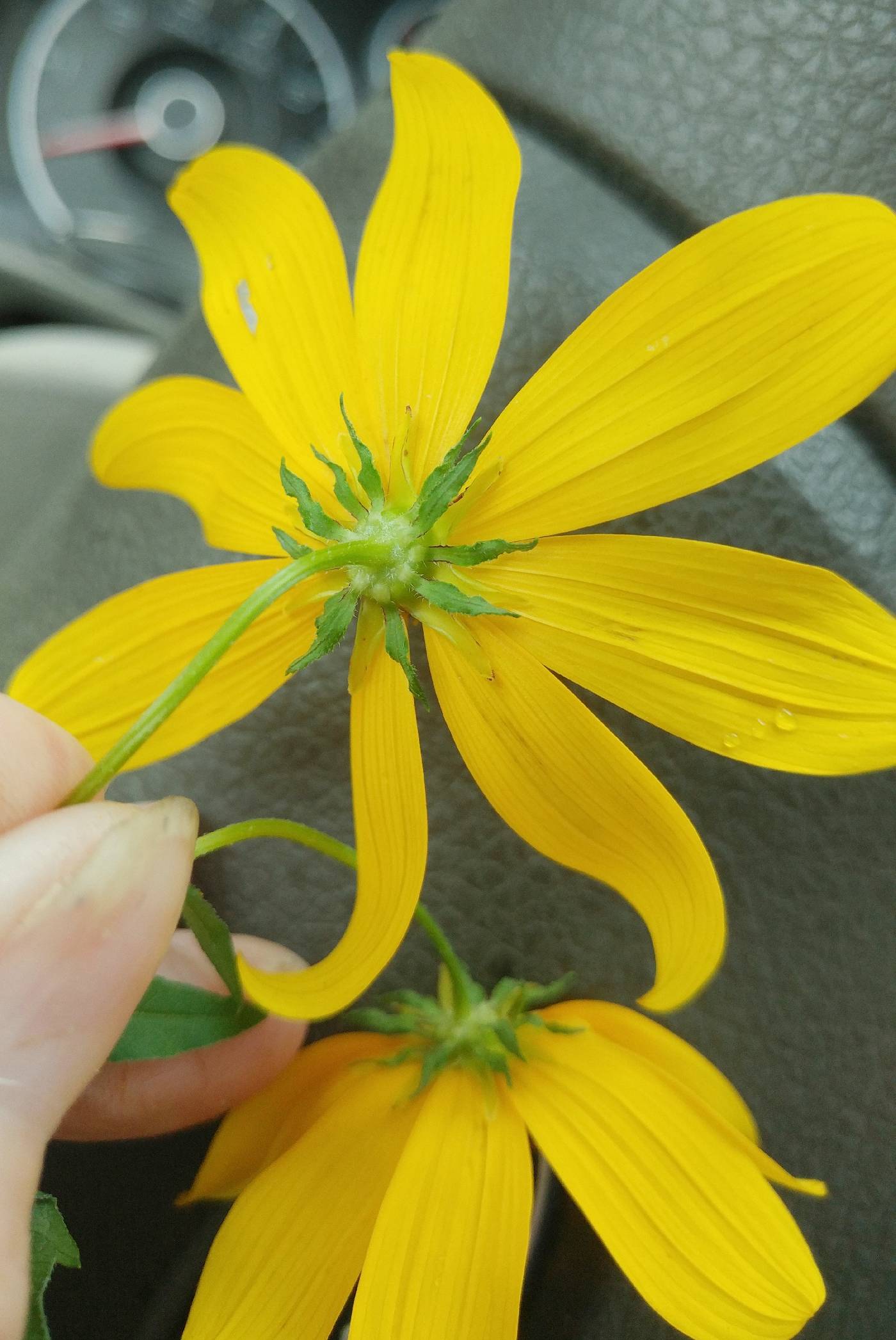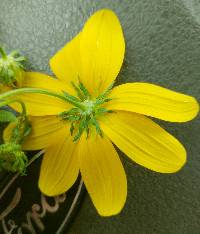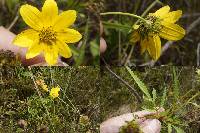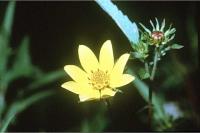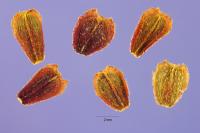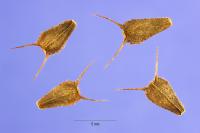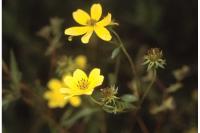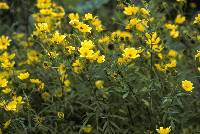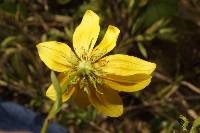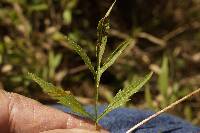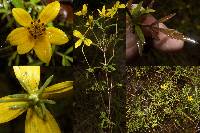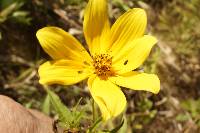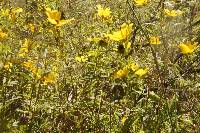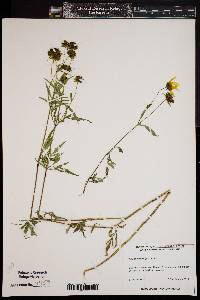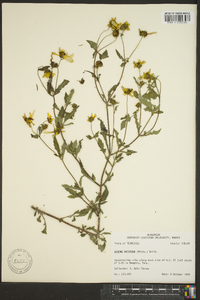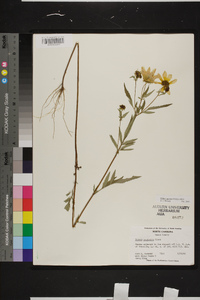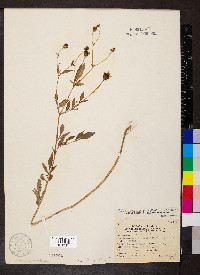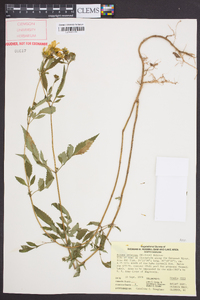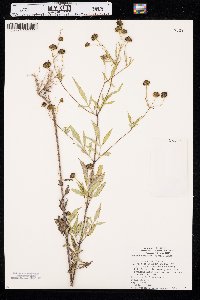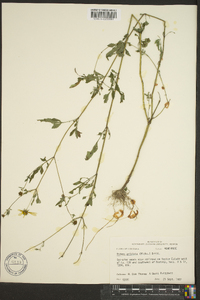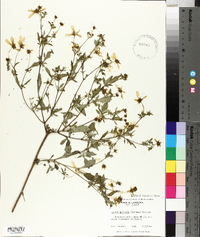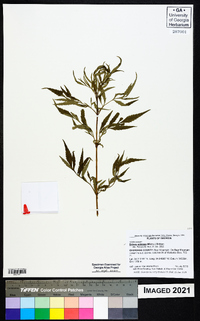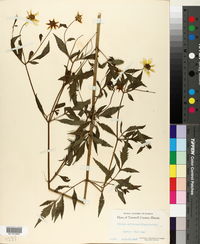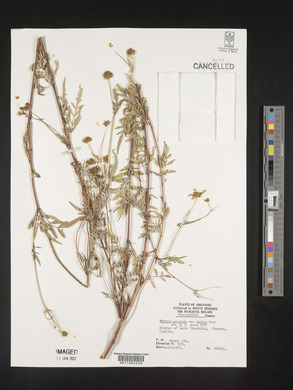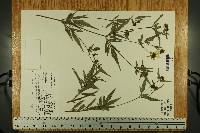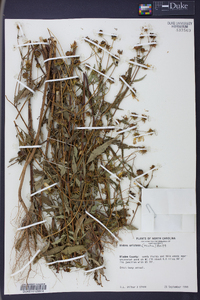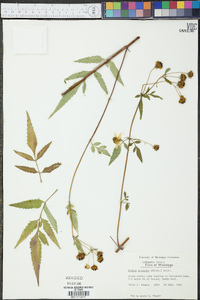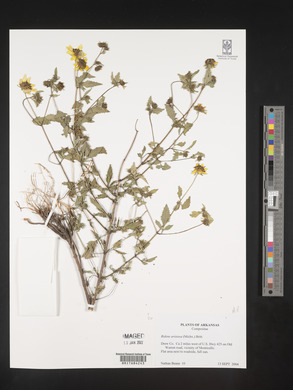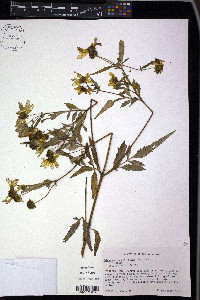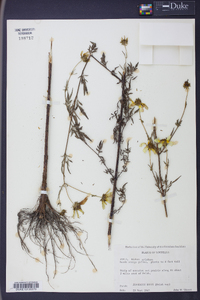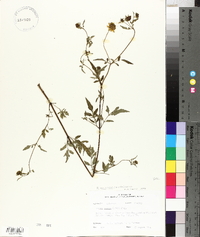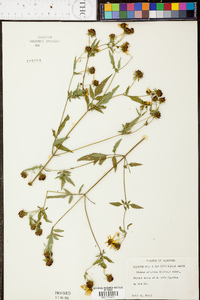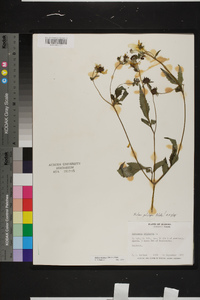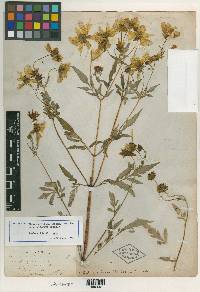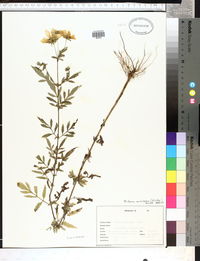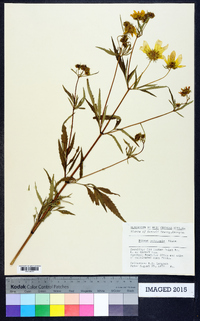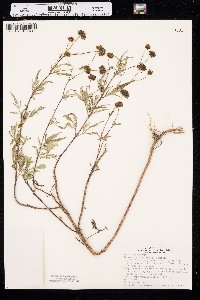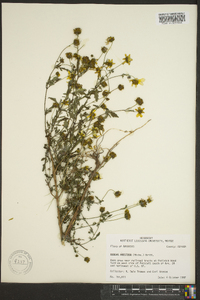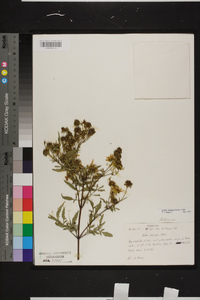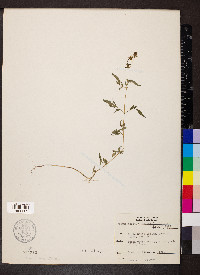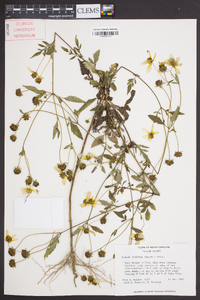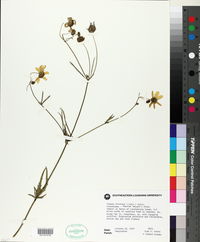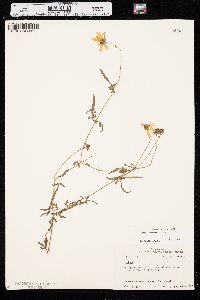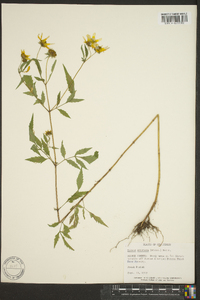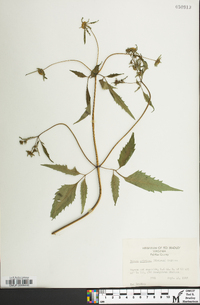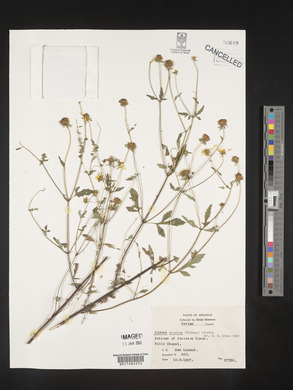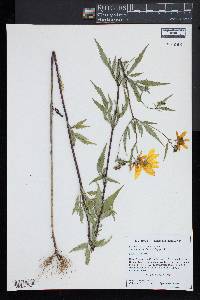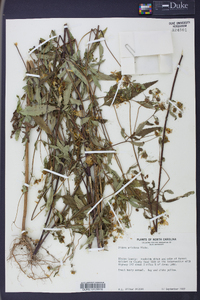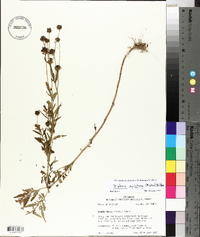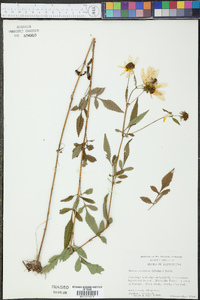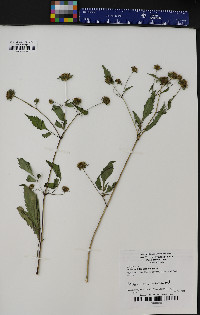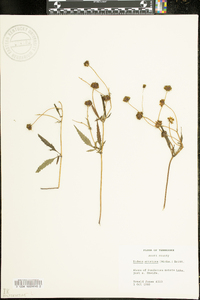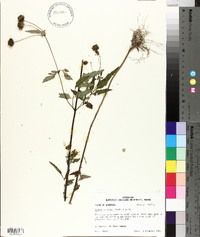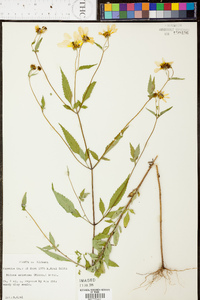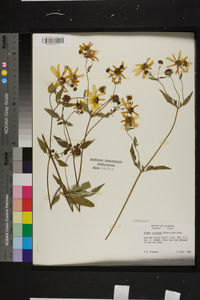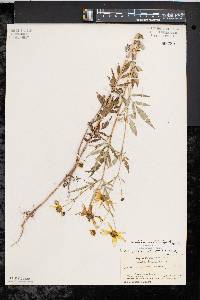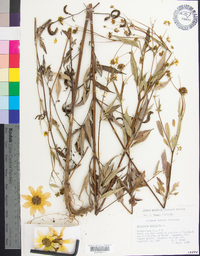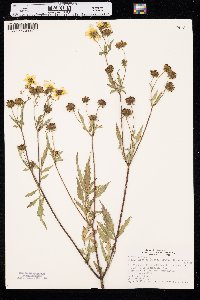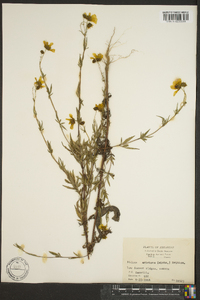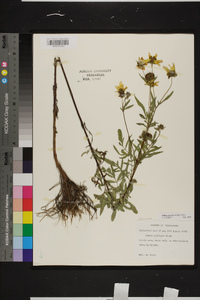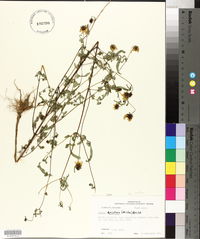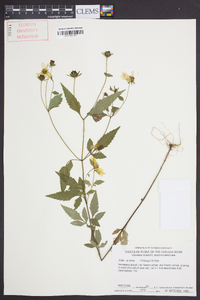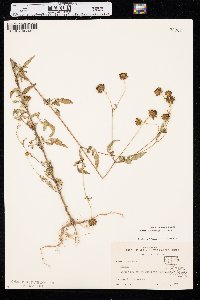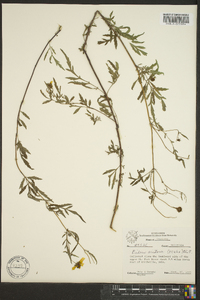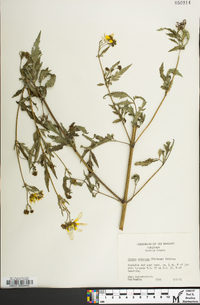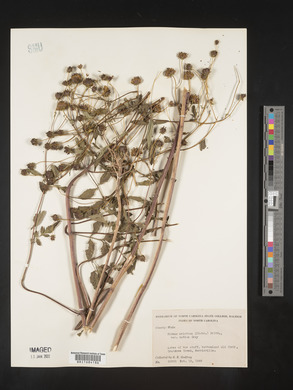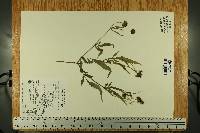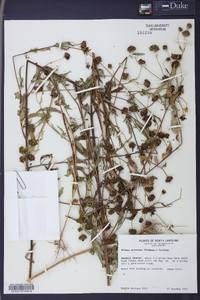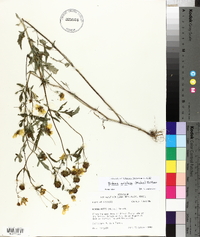Bidens aristosa
|
|
|
|
Family: Asteraceae
Bearded Beggarticks
[Bidens aristosa f. fritcheyi (Fern.) Wunderlin, moreBidens aristosa f. mutica (A. Gray) Wunderlin, Bidens aristosa var. aristosa , Bidens aristosa var. fritcheyi Fernald, Bidens aristosa var. mutica (A.Gray) Gatt. ex Fernald, Bidens aristosa var. retrorsa (Sherff) Wunderlin, Bidens involucrata (Nutt.) Britton, Bidens polylepis var. retrorsa Sherff] |
Annuals, (15-)30-60(-150) cm. Leaves: petioles 10-30 mm; blades lanceolate to lance-linear overall, 30-80(-150) × 10-30(-50) mm, usually laciniately pinnatisect, primary lobes 3-7+, 15-60+ × 2-20 mm, bases cuneate, ultimate margins laciniate to serrate, ciliate, apices acuminate, faces glabrous or sparsely scabrellous. Heads in ± corymbiform arrays. Peduncles (10-)30-80+ mm. Calyculi of 8-12(-16) usually spreading to reflexed, linear, seldom foliaceous bractlets (4-)5-7(-12) mm, margins entire, ciliate, abaxial faces glabrous or ± scabrellous. Involucres ± hemispheric or broader, 6-8(-12) × 10-15 mm. Phyllaries 7-8(-13), lance-ovate to lance-linear, 6-8(-12) mm. Ray florets (5-)8-10+; laminae yellow, 10-25 mm. Disc florets (12-)20-40+; corollas yellowish, 2-3+ mm. Cypselae red-brown to blackish, ± flattened (unequally 3-4-angled), broadly cuneate, outer (4-)5-6 mm, inner 5-7 mm (lengths mostly 1.5-2.5 times widths), margins (± corky-winged) patently to antrorsely barbed, apices truncate to concave, faces weakly striate, sometimes tuberculate, glabrous or sparsely strigillose; pappi 0, or of 2(-4) spreading to divergent, antrorsely or retrorsely barbed awns (0.5-)2-4(-6) mm. Flowering Aug-Oct(-Nov). Marshes, meadows, pine forests, disturbed sites; 0-300 m; Ont.; Ala., Ark., D.C., Ill., Ind., Ky., La., Md., Mich., Minn., Mo., N.C., S.C., Tenn., Tex., Va. Annual or biennial, 3-15 dm, glabrous or slightly hairy; lvs pinnately or bipinnately divided or compound, 5-15 cm including the 1-3 cm petiole, the segments lanceolate or lance-linear, acuminate, incised-serrate or pinnatifid; rays ca 8, 1-2.5 cm; disk 8-15 mm wide; outer invol bracts mostly ca 8(-10), linear, 5-12 mm, mostly shorter than the inner, straight, the back glabrous or finely short-hairy, the margins smooth or moderately ciliate; achenes flat, 5-7 mm, mostly 1.5-2(-2.5) times as long as wide, strigose, the margins antrorsely ciliate and commonly narrow and interruptedly thickish-winged; pappus of 2(-4) antrorsely or retrorsely barbed awns, or none. Wet places, most often in shade; Me. to Minn., s. to Va., Okla., and Tex., probably only intr. eastward. Aug.-Nov. Gleason, Henry A. & Cronquist, Arthur J. 1991. Manual of vascular plants of northeastern United States and adjacent Canada. lxxv + 910 pp. ©The New York Botanical Garden. All rights reserved. Used by permission. From Flora of Indiana (1940) by Charles C. Deam This is a western species that has invaded the western part of the state. My Hancock County specimen was found along a railroad. Our specimens are from low roadsides and are mostly from low, fallow fields which have a hard, white, clay soil. Our specimens of [var. fritcheyi] are all from moist roadsides. [Variety mutica grows] in wet prairie habitats and along the Kankakee River in Porter County, in a prairie habitat in Vermillion County, and in wet, hard clay soil in fallow fields in other places. ...... Indiana Coefficient of Conservatism: C = 1 Wetland Indicator Status: FACW Taxonomic Note: Currently Bidens aristosa and B. polylepis are viewed as two distinct species in Indiana. The variabililty of the calyculi leads some to only recognize a single taxon, B. aristosa. Many photos of live plants on this species page show the variation with long, numerous, roughened calyculi that characterize B. polylepis. |
|
|
|

